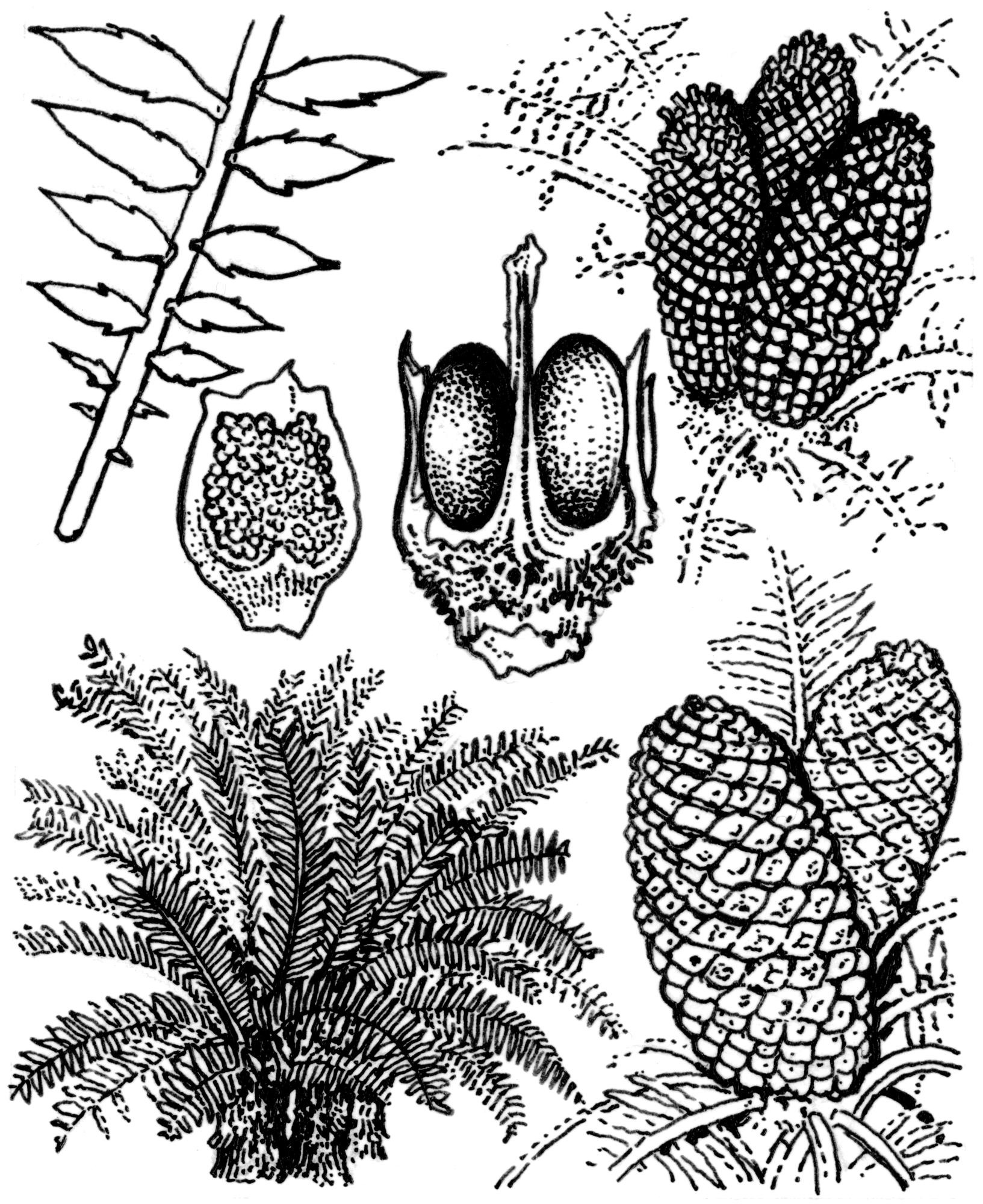
Greek en - in, cephale - head, artos - bread; referring to the starchy texture of the inner trunk that is used as food by natives.
Trunks mostly unbranched, rarely underground, covered with persistent leaf bases. Leaves erect or spreading, to 3 m long. Leaflets spine-tipped with margins generally toothed, occasionally entire or lobed, the lowermost sometimes reduced to spines; veins parallel and with no midrib. Cones axillary, short-stalked, the males usually smaller than the females; scales overlapping, spirally arranged with a downturned beak-like tip; seeds often brightly coloured.
Encephalartos altensteinii has been cultivated in cool and warm areas for many years. In view of their increasing popularity a key to species offered in the nursery trade in warmer districts is given, but without descriptions.
c. 55 species from Central &Southern Africa in a wide range of climates and habitats.
Seed or removal of suckers from the base.
Spiny leaflets; cone scales without points.
Source: (1995). Zamiaceae. In: . Horticultural Flora of South-eastern Australia. Volume 1, Ferns, conifers & their allies. The identification of garden and cultivated plants. University of New South Wales Press.
